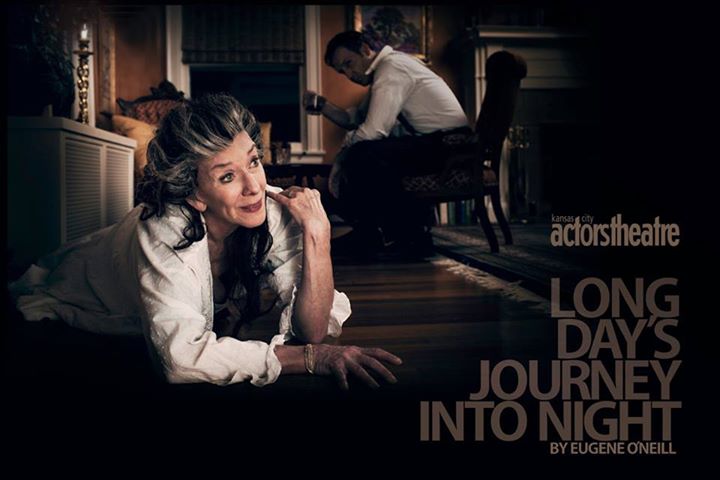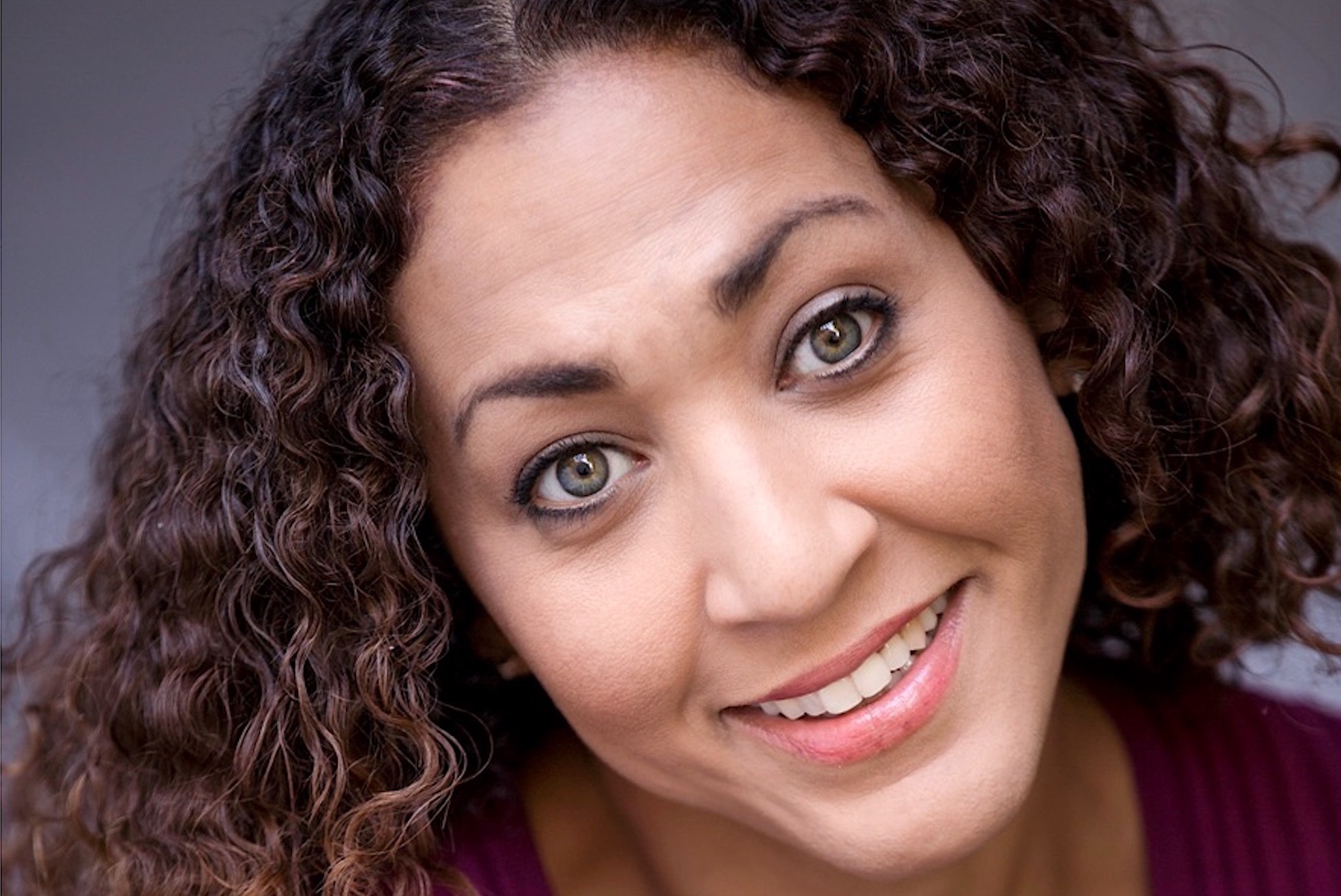THE REAL AMERICAN DREAM: Actors Theatre presents dark drama of love and addiction
By Paul Horsley
Eugene O’Neill’s dark-hued Long Day’s Journey into Night is a classic whose infrequency on the stage belies its importance in theater history. The great Irish American playwright created what has become a sort of prototype for the modern chronicle of the “dysfunctional family.” This week the Kansas City Actors Theatre follows up last month’s exceptional version of William Inge’s bittersweet “Picnic” with a rare production of O’Neill’s sprawling, wrenching and at times bizarrely funny play, as part of what the company is calling “A Classic American Summer.” Long Day’s Journey is directed by John Rensenhouse and stars Paul Vincent O’Connor, Merle Moores, Brian Paulette, Doogin Brown and Jessica Franz. We recently spoke to John about the play, and he had plenty to say.
Paul: How would you describe the upcoming season? Clearly it’s an Inge year, so did that get things rolling?
John: We’ve been pretty British the last two years, with the Pinters and then the Agatha Christie and Tom Stoppard. We felt we were due for something good and American. And because last year was light in tone, we thought we could take on some of the bigger challenges. I will confess that Picnic was sort of the lead show in this. … We’ve been talking about doing Long Day’s Journey into Night for a number of years. And it just seemed like this was the year to do it.
What is your relationship with Long Day’s Journey? Do you remember when you first saw it, and what you’ve seen since – and perhaps how you felt about the movie when you saw it?
My exposure has not been very extensive, I will say that. I read it in college and I remember looking at monologues as a young actor. Some of Edmund’s monologues … are looked at by young actors auditioning as a potential role. And I remember looking at it and thinking it was not a good fit for me, I didn’t feel compelled to do it.
But then seeing the movie … I remember being quite astounded by Katherine Hepburn. And watching it again in preparation for this performance it’s still quite an amazing, amazing performance. I have never seen it live on stage, and I was not going to have anything to do with it until some things got shuffled around and it sort of fell into my lap to direct it. So I set myself to studying it, and am quite fascinated with it, loving it.

- Merle Moores plays morphine-addicted Mary Cavan Tyrone in O’Neill’s fierce family drama
Mark Robbins noted that Picnic probably hadn’t been done here in 30 years, and apparently Long Day’s Journey hasn’t been done professionally here in a quarter-century. These are classics, so why do we see them so seldom? I mean, the occurrence of this play in the theater does not seem to match its purported importance in our history.
Well you know that’s an interesting observation. Because when you think of great American plays this one leaps to mind, and everyone would cite it as one of the top American classic plays. Yet it doesn’t get done much. That has a lot to do with the length of the piece, which if unedited can be four and a half hours. And the subject matter of the piece … is very dark and depressing. It’s hard for people to find that “cathartic uplift” within.
Our temperament is such that we’re conditioned to shorter bites of entertainment, and we’re conditioned to have our entertainment be more escapist and designed to make us feel good – as opposed to making us think and examine our relationships and so on.
I was reading about a recent production at the Guthrie in which the Mayo clinic got involved. They actually used it as a means of having seminars and panel discussions about addiction and alcoholism. Clearly this is one of the profound expressions in theater of a family struggling with addiction. Though I think he kind of cheated in a way: He just wrote about his own family. (Laughter.)
Right, I guess that’s the reward for having gone through that. You get to write a great play really easily. But no, the writing of this play was not an easy thing for him: In fact he called it “facing his dead.” It was reported he would come out the room sometimes while writing and be just a broken-down man, weeping and sobbing. So it was a difficult birth. But he certainly knew the subject matter extremely well.
Will this production include some editing, then? How long is it?
Yes, this is including a lot of editing. I’m beginning to feel a little guilty about it, but I’m very much committed to it being no longer than three hours, and I’m shooting for two and a half. … People don’t want to spend more than three hours in the theater. So yes, I have cut quite a bit of out, and I’m feeling a little guilty. … “My God, what gives me the idea that this can be done to this play?” But he does tend to repeat his themes quite frequently, hammers on the same topics. So I’ve gone through pretty scrupulously, I think, and have just taken things out that are really redundant.
This will look like a different play at two and a half hours. It’s still going to be tough, though, just in terms of its gravity. Is there a way of directing it so that it continues to have kind of a light touch, so that it’s not just somber all the time? There is some humor in it.
There is some humor. I haven’t found all that much, quite frankly, but maybe the actors have, and will bring that to it. But one thing I’m going to key in on, in terms of creating “lightness,” is overlapping dialogue. Because when families get together – I’ve never seen a family in which everyone gets their moment – they all talk at the same time. … So we’re going to be experimenting with that. … I’m hoping that will lighten it up a little bit.
But yes, whatever laughs are in there, by God we’re going to get ’em. (Laughs.) But I’ve got to say that I am thrilled, as a theater practitioner and theater artist, to get the chance to wrestle with this play, to come up against this play. Because it’s intimidating, it’s scary, and left to my own devices I may not have ever done it. But now that I’m in the middle of it, I’m so happy and so thrilled because you know, it’s a great piece of literature.
I have often thought that Picnic, perhaps Inge in general, doesn’t often sound like poetry – its language is somehow flatter and more mundane. Whereas O’Neill does sound like poetry, it has a sort of eloquence.
I agree. Having just sat through our first read-through of Picnic, yes it’s a wonderful, wonderful play, but it is, you know, true Kansas. O’Neill really writes in such a poetical style.
Are you a little jealous that you don’t get to be in Long Day’s Journey? Or do you prefer being where you are?
Right now I definitely prefer where I am. When I see them do it I may start to get jealous. But climbing the whole mountain of learning of the lines and diving into that? No, I’m very happy with the position I’m in right now. And for me personally, I think in 10 years I would love to play James Tyrone.
This play deals with classic American themes: addiction, dysfunction, cruelty within families. But I’m telling you, the buoyant thing that holds it all up for me is, when you study the play you get a real sense for how much these people love and depend on each other.
Long Day’s Journey runs September 3rd-15th, For tickets call 816-235-6222 or go to kcactors.org.
To reach the author send email to phorsley@sbcglobal.net or find him on Facebook (paul.horsley.501).
[slider_pro id=”2″]
[slider_pro id=”3″]
Features

Tyrone Aiken danced prodigiously as a youth, trained at The Ailey School as a young adult, worked as a professional dancer at the height of the New York dance ferment,…

CAROLINE DAHM Dancer, choreographer, producer, master teacher, adjunct dance professor at The UMKC Conservatory, assistant director at Wylliams/Henry Contemporary Dance Company What I love about the Kansas City performing-arts scene: Kansas…

It’s difficult to remember what the Kansas City skyline looked like 20 years ago, before the Kauffman Center for the Performing Arts began to take shape at 16th and Broadway.…





